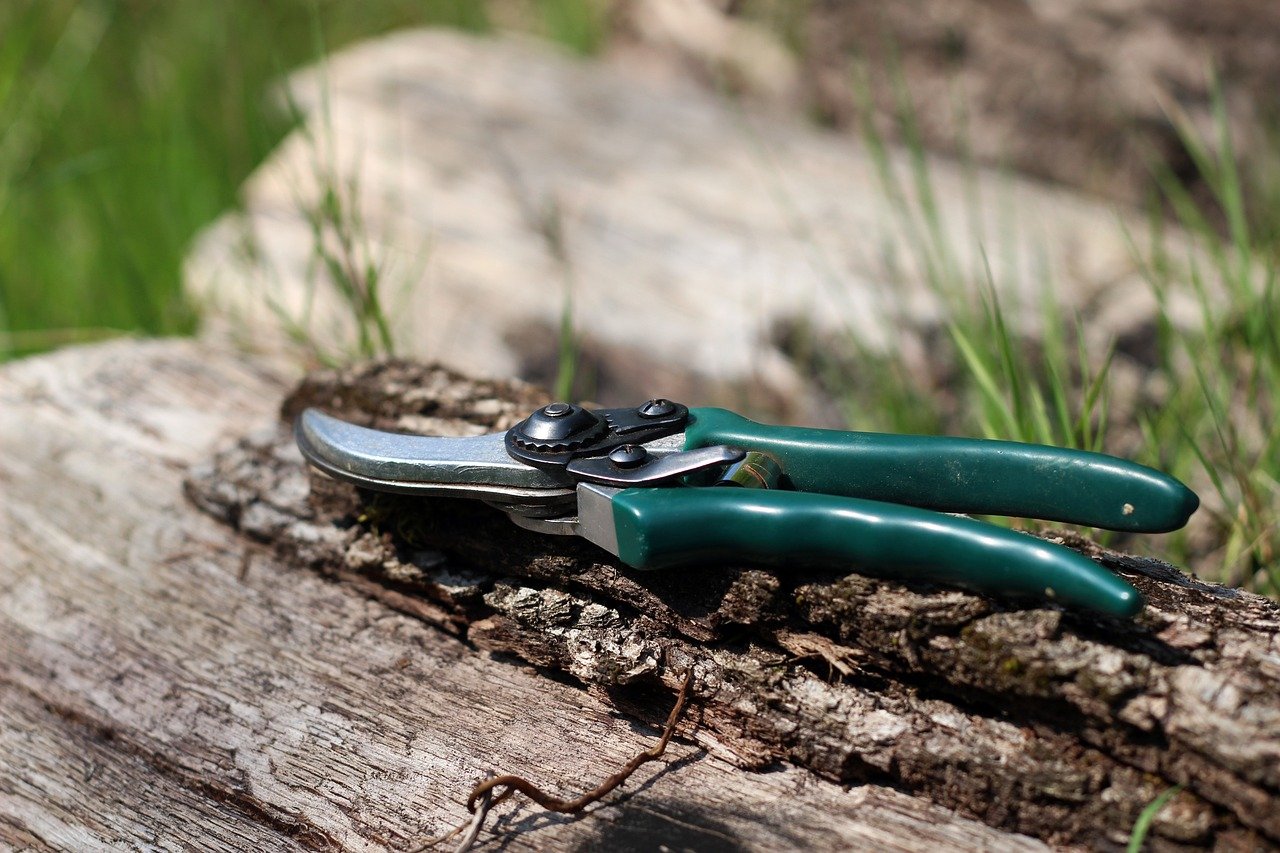Pruning is both an art and a science. It is essential for keeping your garden healthy, structurally sound, and beautiful. Each plant type has unique requirements that require specialized pruning methods.
Understanding The Importance of Pruning
Pruning is necessary for numerous reasons
Pruning improves health by eliminating dead, damaged, or diseased branches, allowing for better air circulation and light penetration. This lowers the risk of diseases and pests.
- Development Management: Proper pruning promotes strong development by directing the plant’s energy to healthy branches and new growth. This is especially crucial for flowering and fruiting plants.
- Aesthetic Appeal: Pruning plants regularly keeps them in good shape and makes your yard look better. Well-shaped plants also improve the overall environment and serve as focal points in the garden.
- Safety Reasons: Removing weak or heavy branches avoids problems like falling limbs during storms. This is especially important for trees near dwellings and pedestrian areas.
Optimal Pruning Timing: Spring, Summer, Autumn, Winter
Spring pruning
Most deciduous trees and shrubs benefit from pruning in early spring before new growth begins. This promotes rapid spring development and ensures that wounds heal before the stress of summer heat.
Summer pruning
Summer pruning is usually lighter and focused on maintenance. It controls plant size and shape while also removing sick or dead limbs. Late spring flowering bushes should be clipped after blooming to avoid removing buds for the following year.
Autumn pruning
Autumn is a transitional period when pruning can be advantageous for certain plants, particularly those that bloom in the spring. Late-season pruning helps shape plants before winter but avoids large cuts because plants require time to recuperate before frost.
Winter pruning
Dormant season pruning can be helpful to trees and shrubs. Because plants are not actively developing, they are less vulnerable to stress at this time. Winter pruning provides a sharper picture of the plant’s structure, allowing for more educated cutting decisions.
Pruning techniques for trees
Rejuvenation pruning for trees
This approach is performed on older, overgrown trees. Significant cuts are made to eliminate a large portion of the tree and restore healthy lateral branches. It promotes new growth and can rejuvenate an aged tree.
Tree Shaping Techniques
Shaping is crucial for developing a solid structure in young trees. Thinning, topping, and heading back techniques contribute to a well-balanced canopy, reducing the chance of structural failure as the tree ages.
Pruning techniques for shrubs
Formative Pruning of Shrubs
Formative pruning is necessary for young shrubs to shape their growth. This entails light trimming to foster bushier growth and create a good framework for healthy development.
Maintenance pruning for shrubs
Maintenance pruning involves removing dead or damaged branches and rearranging shrubs to improve their appearance. Depending on the plant’s growth rate, this should be done annually or biannually.
Pruning Techniques for Vines
Training Vines for Optimal Growth
Vines can be trained with trellises, arbors, or fences. Regularly trimming back excess growth allows plants to concentrate on creating blooms and fruits rather than unmanageable lengths.
Winter Pruning for Vines
When vines are dormant in the winter, they frequently require extensive pruning. This procedure reduces the previous year’s growth to promote bushier, healthier plants throughout the growing season.
Seasonal Pruning: Advantages and Best Practices
Understanding seasonal requirements aids in developing a pruning regimen tailored to each plant’s individual demands. Regularly checking your plants’ health and shape and their flowering and development cycles will ensure that pruning is done when it is most beneficial.
Essential Tools for Effective Pruning
Pruning Shears: Selecting the Right Type
Choosing the appropriate pruning shears is determined by the task at hand. Bypass pruners are best for live branches, whereas anvil pruners work better for dead wood. Clean cuts encourage speedier healing, so make sure the shears are sharp.
Saws and Tools for Larger Branches
For larger branches, pole saws and hand saws are required. Investing in loppers for harder branches that are too thick for conventional pruners but workable without full saws is also a good idea.
Common Pruning Mistakes To Avoid
One of the most typical pruning errors is cutting too much at once, which can shock the plant and limit its growth. Other common mistakes include:
- Not utilizing the proper tools.
- Failing to remove dead or diseased branches.
- Overlooking seasonal timing.
To ensure your plants survive, you should educate yourself on suitable practices and avoid frequent errors.
Benefits of Deadheading in Garden Plants
Deadheading, or the removal of spent flowers, is a trimming practice that promotes new blooms while preventing unwanted seed production. This procedure improves plants’ aesthetic appeal and directs their energy toward making new blossoms instead of seeds.
Pruning improves plant health
Ultimately, pruning improves plant health. Regularly pruning damaged or dead branches and trimming plants improves their resistance to diseases and pests. Pruning also promotes new growth, making plants more vibrant and visually appealing.
FAQS
What is the “1-3 Rule” for pruning?
The 1-3 rule states that while pruning a branch, you should cut it back to a lateral branch that is at least one-third the diameter of the pruned branch. This promotes improved plant development and structure.
What Are the Basic Pruning Techniques?
Thinning (removing complete branches), heading (shortening branches), and rejuvenation (cutting back an old plant to foster new growth) are some of the most basic pruning procedures. Each approach has a specific purpose in preserving plant health and shape.
What are the Commonly Acceptable Pruning Techniques?
Selective pruning (removal of selected branches), crown reduction (reduction of a tree or shrub’s height), and pinching (removal of stem tips to increase business) are all common acceptable trimming procedures. These methods promote air circulation, light penetration, and overall plant vigor.

